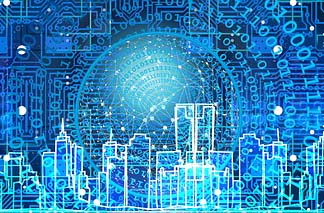
Much of the discussion among the Democratic candidates has revolved around health care, gun control and immigration. However, one interesting topic introduced in the September debate involved the economic impact of the artificial intelligence-induced tsunami of unemployment arising from automation. For example, autonomous trucks will likely eliminate a huge swath of the 3.5 million truck drivers (one of the larger occupations in the U.S.). Some say that Trump's upset victory in 2016 was partially a result of the job displacement of 4 million manufacturing jobs in Ohio, Pennsylvania, Wisconsin, Missouri and Michigan – all swing states needed to win the Electoral College. “There's a straight line up between the adoption of industrial robots in a community and the movement toward Donald Trump," said Democratic candidate Andrew Yang during an ABC News interview.
Fears about the impact of automation on jobs has a long history. In the early 1800s, workers in the textile industry smashed the new faster textile machines which they believed to be a serious threat to their jobs. Admittedly, artificial intelligence (AI) has often been disruptive in the short run; but it ultimately led to the creation of a whole host of new jobs and new industries – leading to a rise in our standard of living. Will the current AI-revolution follow this past trend, or will it be different this time?
According to the input-output model of Nobel Laureate Wassily Leontief, automation can be expected to result in about a 10% reduction in labor input. Furthermore, it involves a significant increase in professional occupations along with a steep decline in production/clerical workers. Leontief concludes, however, that this displacement effect is often offset by an increase in the demand for production workers in the automated-equipment industries, meaning that “… production workers can be expected to maintain their share of the labor force."
According to a study by the McKinsey Global Institute, "Automation and Employment in the 21st Century," technological advances have historically ended up creating more jobs than it destroyed. The study stated:
“Many workers will have to change, and we expect business processes to be transformed. However, the scale of shifts in the labor force over many decades …. is not without precedent. It is of a similar order of magnitude to the long-term technology-enabled shifts away from agriculture in developed countries' workforces in the 20th century. Those shifts did not result in long-term mass unemployment, because they were accompanied by the creation of new types of work."
Most jobs involve a number of different tasks, and maybe 50% of the activities are amenable to automation. Automating part of the tasks incumbent with an occupation often results in an overall increase in the productivity of the worker, resulting in a higher marginal revenue product. Furthermore, large-scale automation will not happen overnight, but will rather take many decades. Given the projected decline in working-age population in most industrialized economies, automation may be necessary to offset the projected shortage of human labor in the second half of the 21st century.
Finally, what occupations are most susceptible to automation-induced decline over the next few decades? According to the Forbes Technology Council, some of the most likely candidates include:
- Insurance underwriting
- Warehouse and manufacturing jobs (especially jobs that involve highly repetitive tasks)
- Customer service,
- Research and data entry
- Production line robotics (especially applied to quality control)
- Local TV advertising
- Pharmaceutical research (choosing ingredients for experiments)
- Banking services (think of ATMs)
- Retail checkout (think of kiosks at McDonalds)
- Delivery services (think of Amazon's drones)